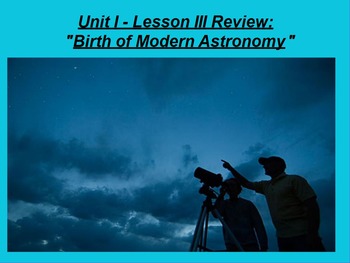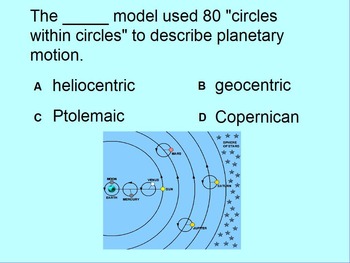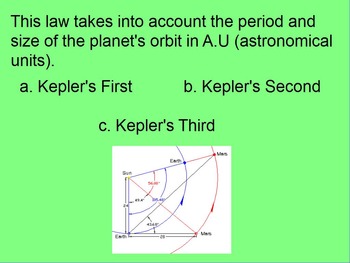ActivInspire Review Unit I Lesson III "Birth of Modern Astronomy"
- Flipchart File
- Easel Activity
Description
Review of the PowerPoint Unit I Lesson III "Birth of Modern Astronomy." Questions include 20 true/false; multiple choice and text entries/responses. A PDF student worksheet/study guide using TPT's Easel program is included. This allows for students to complete the assignment online and to submit through Google classroom (see the easy-to-use Easel instructions). All Unit I PowerPoint lessons; ActivInspire reviews; assessments and many related activities; worksheets etc. can be found under "Complete Astronomy Unit I Introduction Into Astronomy" zip file folder.
Terms/concepts in this lesson include:
Ptolemy
Copernicus
Tycho Brahe
Johannes Kepler
Galileo Galilei
Isaac Newton
Copernican principle
telescope
Catholic Church
Laws of Planetary Motion
Astronomical Unit (A.U.)
Newton's Laws of Motion
action-reaction pairs
gravity
Law of Gravity
astronomydad
Review Unit I Lesson III "Birth of Modern Astronomy" by astronomydad is licensed under a Creative Commons Attribution 3.0 Unported License.






